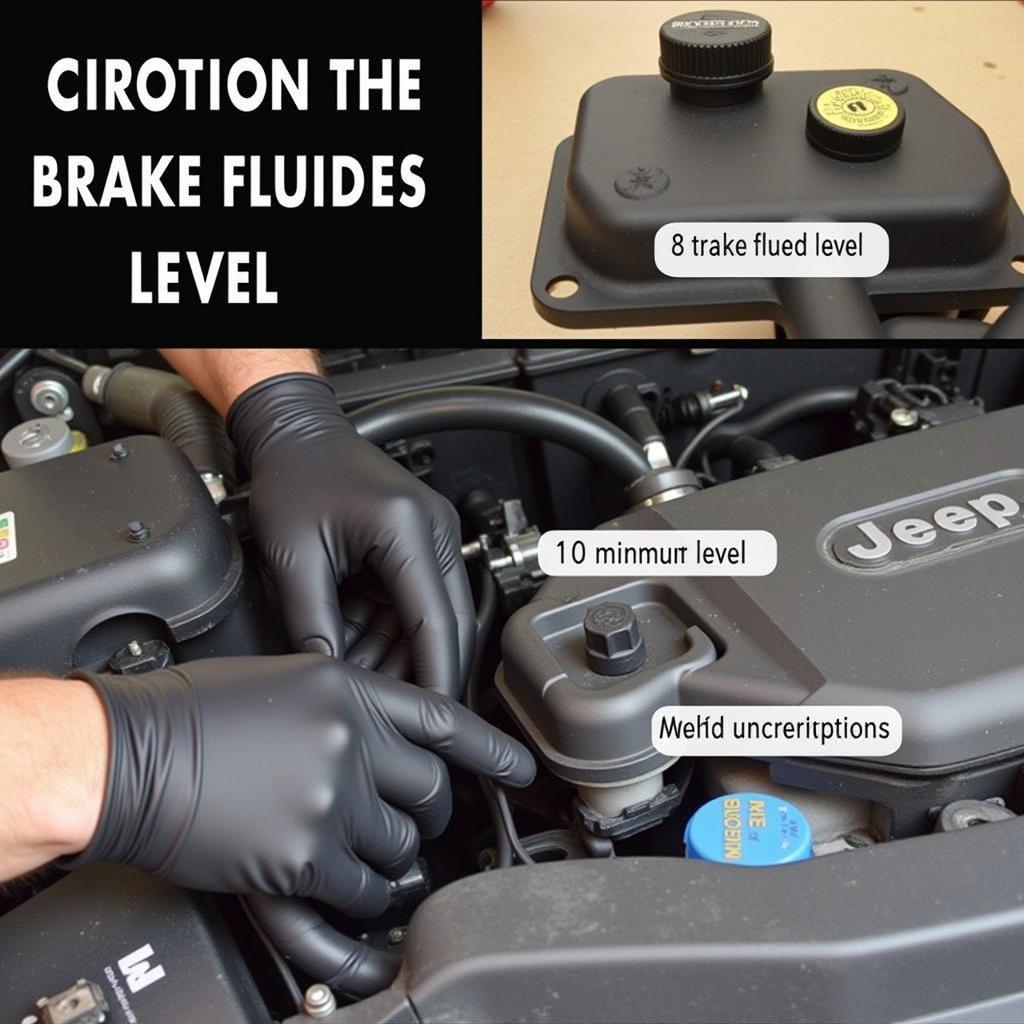The jeep brake warning light is a crucial safety indicator that should never be ignored. It can signal various issues, from low brake fluid to more serious problems with the braking system. Understanding what triggers this light and how to address it is vital for safe driving. Read on to discover common causes and solutions for the dreaded jeep brake warning light.
Understanding Your Jeep’s Brake Warning Light
The brake warning light, typically a red exclamation point within a circle, serves a dual purpose. It alerts you to potential issues with your Jeep’s braking system, which could include anything from low brake fluid to worn brake pads or a malfunctioning ABS system. It also activates when the parking brake is engaged. A persistent brake warning light demands immediate attention, as it indicates a compromise in your Jeep’s stopping power. If you notice the light staying on, even after disengaging the parking brake, it’s time to investigate. You can find more detailed information about a constantly illuminated brake warning light on our page dedicated to jeep brake warning light stays on.
Common Causes of a Jeep Brake Warning Light
Several factors can trigger your Jeep’s brake warning light. The most common culprits include:
- Low Brake Fluid: This is the most frequent reason for the warning light. A leak in the brake lines or worn brake pads can deplete brake fluid levels, triggering the warning.
- Worn Brake Pads: Thin brake pads reduce braking efficiency and can activate the warning light. Regular brake pad inspections are crucial for safe driving.
- Faulty ABS System: A malfunctioning Anti-lock Braking System (ABS) can trigger the light. This often requires professional diagnosis.
- Parking Brake Engaged: Sometimes, the simplest explanation is the right one. Ensure your parking brake is fully disengaged.
- Faulty Brake Light Switch: This switch, located at the brake pedal, can malfunction and cause the warning light to illuminate.
 Jeep Brake System Components: Master Cylinder, Calipers, and Rotors
Jeep Brake System Components: Master Cylinder, Calipers, and Rotors
Troubleshooting the Jeep Brake Warning Light
If your jeep brake warning light remains illuminated, follow these steps to troubleshoot the problem:
- Check the Parking Brake: Ensure the parking brake is fully released. This often resolves the issue.
- Inspect Brake Fluid Level: Open the hood and locate the brake fluid reservoir. Check the fluid level against the minimum and maximum markings. If low, add brake fluid of the correct type specified in your Jeep’s owner’s manual. For more specific guidance on a 2011 Jeep Liberty, check out 2011 jeep liberty brake warning light.
- Visually Inspect Brake Pads: Look through the wheel spokes to check the thickness of the brake pads. If they appear thin, it’s time for a replacement. For Jeep Cherokee owners, jeep cherokee brake pad warning light provides additional resources.
- Check for Leaks: Inspect the brake lines and components for any signs of fluid leaks. A leak indicates a more serious problem requiring professional attention.
- Consult a Professional: If you’re unsure about the cause or unable to resolve the issue yourself, consult a qualified mechanic. If you have an older Jeep Grand Cherokee like the 2002 model and are experiencing this issue, 02 jeep grand cherokee brake warning light is on can be a helpful resource.
What if my TJ’s brake warning light is on?
Older Jeeps, like the TJ, can also experience this issue. Specific troubleshooting information for TJs can be found on our tj brake warning light page.
 Checking Jeep Brake Fluid Level
Checking Jeep Brake Fluid Level
Conclusion
Addressing the jeep brake warning light promptly is essential for your safety. While some causes are simple to fix, others require professional expertise. Never ignore this warning, as it could indicate a serious problem with your Jeep’s braking system. Regular maintenance and prompt attention to warning lights can help keep your Jeep running safely and smoothly.

